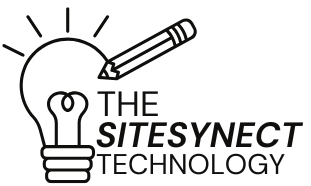How AI Enhances SaaS Usability and Features
Explore how AI elevates SaaS with predictive analytics, NLP, and self-healing workflows. See real-world examples of AI-driven usability and features in top 2024 tools.

Introduction
In 2024, SaaS isn’t just software—it’s intelligent, adaptive, and indispensable. From automating mundane tasks to predicting user needs, AI is reshaping SaaS into a powerhouse of efficiency and innovation. Whether you’re a startup or an enterprise, here’s how AI is enhancing SaaS usability and supercharging features you rely on daily.
1. Personalized User Experiences: AI Knows What You Need
Traditional SaaS: One-size-fits-all dashboards and generic recommendations.
AI-Powered SaaS:
-
Dynamic Interfaces: Tools like HubSpot and Zoho CRM adjust layouts based on user roles (e.g., sales vs. marketing).
-
Behavior-Driven Insights: AI analyzes user patterns to surface relevant features (e.g., highlighting email templates during campaign season).
-
Case Study: Airtable’s AI suggests custom workflows, reducing setup time by 40%.
Trend Alert:
-
Generative UI: Tools like Jasper auto-generate dashboards tailored to individual KPIs.
2. Automation of Routine Tasks: Work Smarter, Not Harder
AI’s Role:
-
Workflow Automation: Platforms like Zapier use AI to auto-map triggers (e.g., “Notify Slack when a deal closes in Salesforce”).
-
Smart Data Entry: Docusign extracts key data from contracts using NLP, eliminating manual input.
-
Customer Support: Intercom’s Fin resolves 50% of queries via AI chatbots, freeing human agents for complex issues.
2024 Innovation:
-
Self-Healing Workflows: Tools like Monday.com detect and fix broken automations.
3. Predictive Analytics: Anticipate Trends Before They Happen
How It Works:
-
Sales Forecasting: Salesforce Einstein predicts deal closures with 95% accuracy by analyzing historical data.
-
Churn Prevention: ChurnZero flags at-risk customers using usage patterns.
-
Resource Allocation: Asana uses AI to predict project timelines and recommend task prioritization.
Pro Tip:
-
AI-Powered A/B Testing: Tools like Optimizely predict winning variants before launch.
4. Enhanced Security: AI as Your Digital Bodyguard
AI Advantages:
-
Anomaly Detection: Okta spots suspicious login attempts (e.g., logins from multiple countries in an hour).
-
Data Privacy: OneTrust auto-classifies sensitive data and enforces GDPR policies.
-
Threat Response: CrowdStrike neutralizes breaches in milliseconds using machine learning.
Stat: Companies using AI-driven security tools reduce breach costs by 40% (IBM, 2024).
5. Natural Language Processing (NLP): Talk to Your Software
Use Cases:
-
Voice Commands: Notion AI lets users search databases via voice (“Find Q3 sales figures”).
-
Sentiment Analysis: Gong.io analyzes customer calls to gauge satisfaction.
-
Smart Documentation: GitHub Copilot auto-writes code comments and documentation.
Trending Tool:
-
ChatGPT for SaaS: Platforms like Freshworks integrate ChatGPT to draft support replies and knowledge base articles.
6. Ethical AI & Future Trends
Challenges:
-
Bias Mitigation: Tools like FairNow audit SaaS algorithms for equity.
-
Transparency: Users demand explainable AI (e.g., DataRobot’s decision logs).
What’s Next:
-
AI-First SaaS: Tools designed around AI, not just enhanced by it.
-
Hyper-Personalization: Real-time adaptation to user emotions and context.
Conclusion
AI isn’t just an add-on—it’s the backbone of modern SaaS. By automating grunt work, predicting trends, and personalizing every interaction, AI turns clunky software into intuitive partners. Whether you’re streamlining workflows or fortifying security, AI-driven SaaS tools are the key to staying competitive in 2024 and beyond.
What's Your Reaction?
 Like
0
Like
0
 Dislike
0
Dislike
0
 Love
0
Love
0
 Funny
0
Funny
0
 Angry
0
Angry
0
 Sad
0
Sad
0
 Wow
0
Wow
0







































